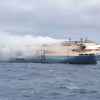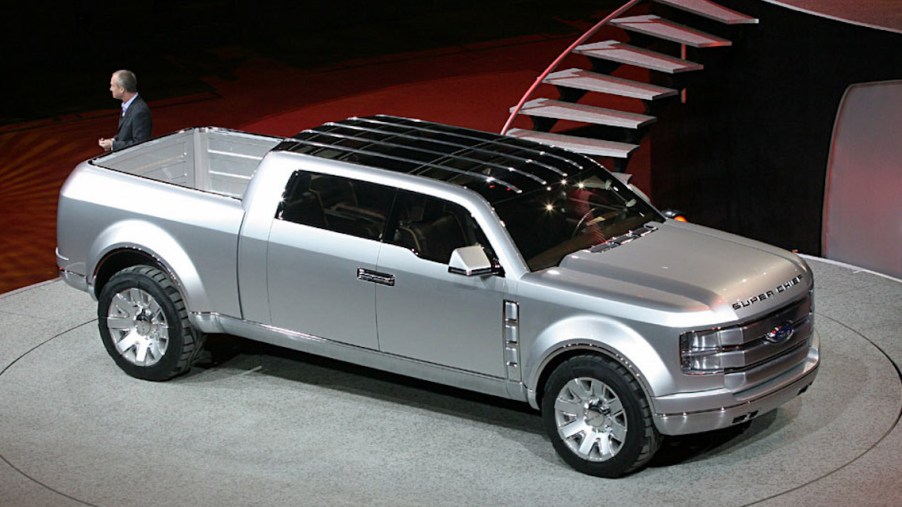
Ford Truck Concepts We Wish Were Made
Ford is number one in pickup truck sales and has been for decades. It knows trucks and knows how to do truck concepts as well. There have been far more than the ones we have chosen to feature here, but these are some of the more radical, or far-reaching ones that we wish Ford had produced.
2002 F-350 Mighty Tonka concept

You can instantly tell it is an F-350, yet it shares nothing production F-350s are made from. The chiseled body sides are devoid of any sculpturing or body trim. The emphasis is on the grille and large fender flares, which dominate the design. Power comes from Ford’s next generation of PowerStroke diesel engines it called Super-600. It was a 6.0-liter hooked to a five-speed PowerTorq automatic transmission. Mighty Tonka also featured Electronic Variable Response Turbocharging. It gave different amounts of boost depending on loads placed on the PowerStroke. Though nothing came directly to production, the 2008 Super Duty and 2009 F-150 applied some of the exterior design themes.
2006 Super Chief concept truck
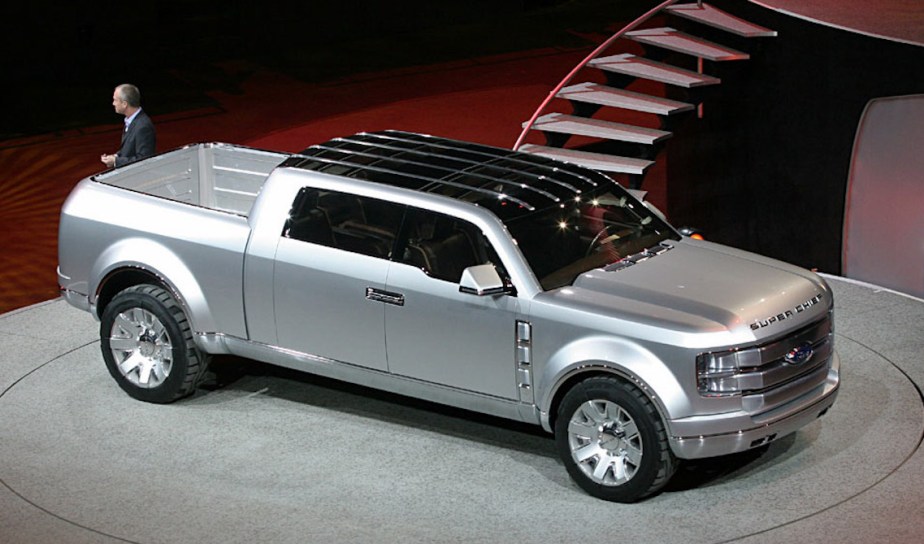
From an original design by designer Ed Golden, the Super Chief took a big leap in F-Series design themes. Like the Mighty Tonka design that preceded it, the Super Chief celebrated Super Duty Fords. It had a bold look, and a bold supercharged V10 under the massive hood. Remember, at this time Ford grilles were still proportional to car grilles. The Super Chief ushered in the expansive, strong grilles we see in most pickups today. Huge wheel arches highlight the 26-inch alloy wheels. Generally, the Super Chief was a precursor to the more luxurious interiors found in F-Series trucks, while spotlighting bolder designs to come.
2001 F-150 Lightning Rod
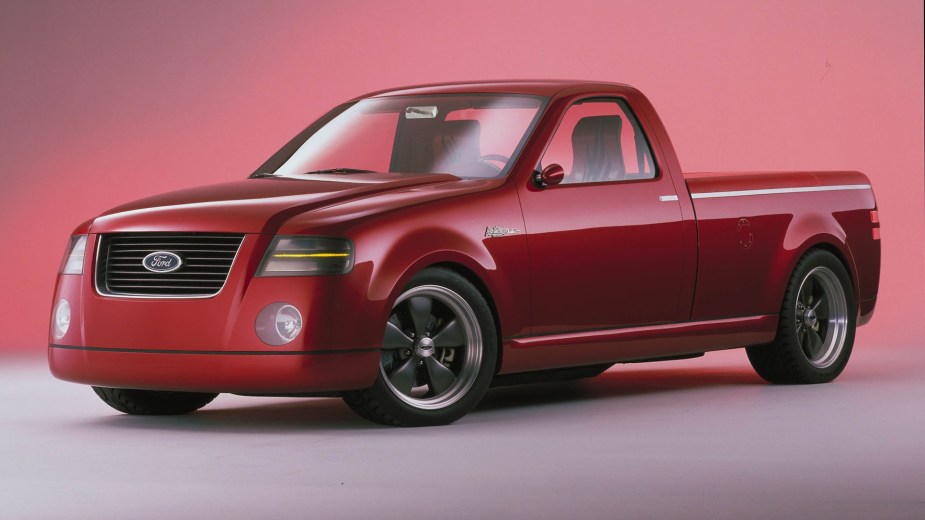
Ford’s Wolfgang Gotschke explored blending hot rods into F-150s during the heyday of sport trucks, thus the name Lightning Rod. Ford actually cut up a then-current F-150 to transform into the concept. But too much was changed to know where to start. Though featuring a long bed, the wheel arches have been pulled out for less overhang. That continues with flush bodywork instead of bumpers. Wolfgang chose New Zealand Maori-inspired tribal tattoo designs inside, and on the hard tonneau. Unfortunately, nothing directly from the Lightning Rod was applied to production trucks, which is a shame.
2008 Ranger Max concept truck
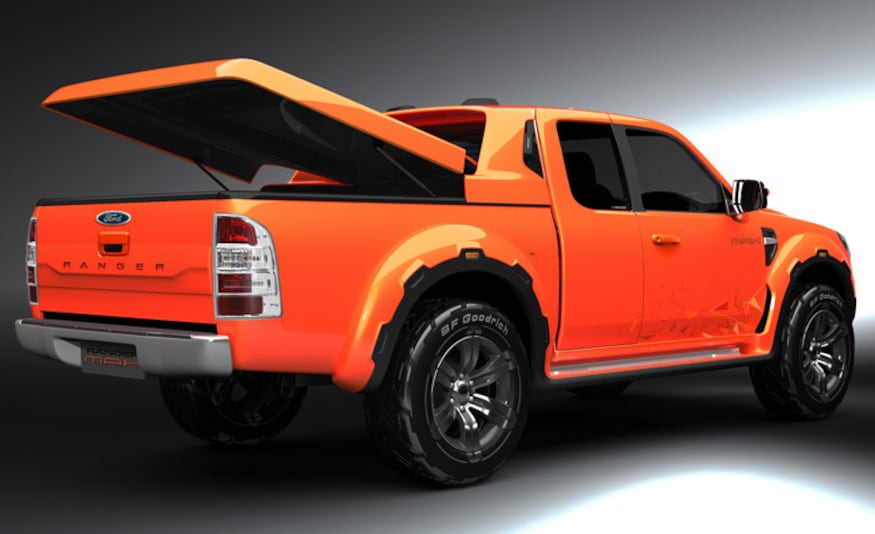
A concept out of Ford’s Thailand and Australian design teams, the Ranger Max featured ideas Ford wanted to test with the public. The gear-like wheel arches and nicely integrated “sportsbar” at the back of the top give the production Ranger it is built from a completely different look. The fussiness of the body sides of a stock Ranger has been simplified to give emphasis to the rounded wheel arches. Unfortunately, Ford never applied these features to a production Ranger, though it stayed in production for another four years.
1994 Power Stroke concept truck
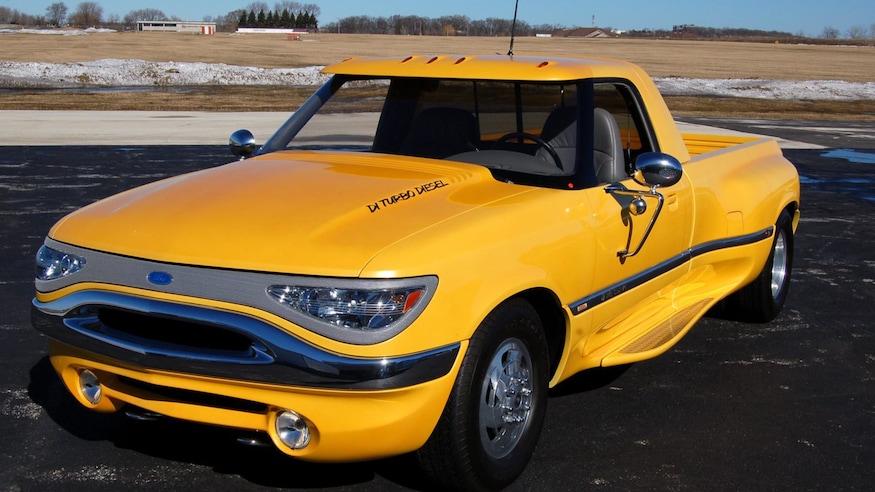
Ford was still 18 years away from manufacturing its own PowerStroke diesel engine, but it generously used the Power Stroke name for everything related to diesel engines. That included its introduction to the diesel world also in 1994. That was the 6.9-liter indirect-injection diesel with 170 hp and 315 lb-ft of torque. To celebrate the engine and name, Ford Design created the Power Stroke concept. Ford was also poised to debut an entirely new F-150 in 1997, which the Power Stroke gave clues of. Of course, it was a much more sculpted body design, without the chiseled creases and indents of previous F-150 trucks. The Power Stroke previewed all of that, notwithstanding the beaver mask fascia. Giving a nod to the sport truck trends emerging with its lowered suspension, it was a smoother-off peek at the future of Ford’s F-150.
